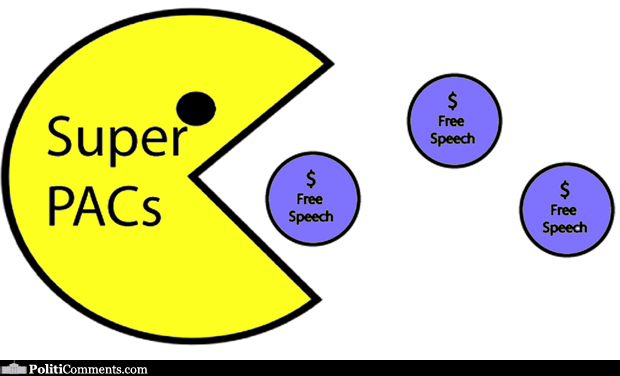
There is now talk of billions rather than millions of dollars required for the next presidential elections.
The front cover of Time magazine’s August 2012 issue is a memorable one. The White House is in the background. In the foreground, there is a poster that says, “For sale, $2.5 billion.”
This was right in the middle of election campaigning. Mitt Romney was taking on Barack Obama. A river of money was already flowing.
$4 Billion
The prestigious magazine brought to light something of which everyone was already aware. However, not everyone had focused on it in all its gravity, given the magnitude of the numbers and its dangerousness. This was a democratic electoral contest: To win the race and “buy” the presidency, the candidates had to spend at least $1 billion each. Had money taken precedence over ideas?
In the end, we know how those elections went and what the final outcome was. And if we think about the ones that will be held in 2016, we can already imagine how they will go, at least regarding the turnover of money: Every record will be broken.
According to the estimates of Albert R. Hunt, a columnist for Bloomberg, at least $10 billion will be thrown into the great circus ring of the elections, and Hillary Clinton and her Republican adversary (Jeb Bush?) will spend at least $2 billion each, double the amount spent by Obama and Romney put together.
Now that the Supreme Court has taken away some restrictions on fundraising, a real spending spree is to be expected. Most of it will be carried out by the super PACs. These are the (private) committees that indirectly support the candidates running for election.
They support the candidates through advertisements (television and radio commercials, online ads, gadgets and public initiatives), managing the money they raise themselves rather than donating it to the candidate’s electoral committee. This is how they legally bypass the legal restrictions on financing electoral campaigns.
All the candidates have one Super PAC (or more) supporting them. At first, in 2012, in the name of greater transparency (it is not always possible to understand who is behind these committees), Barack Obama decided to reduce the power of these money-collecting machines.
As in his victorious 2008 campaign, Obama had originally counted on widespread fundraising, or collecting small monetary donations from millions of people. He changed his mind and his strategy when he realized the firepower of his Republican adversary. The super PACs have therefore also been accepted in the Democratic camp.
Democrats and Super PACs
Hillary Clinton has never had such qualms. Super committees soon started to work for her. Even though they did not collect funds in 2014, the structure is there ready for them to do so as soon as they get the green light (any time now). The former first lady has always shown herself very capable when it comes to weaving together the right relationships with her sponsors. On this occasion, however, she will be more discreet.
The controversy over Clinton Foundation money, which came from abroad in exchange for favors from the former president and former secretary of state, the most powerful couple in America, is still very recent. Furthermore, it has been discovered that Bill and Hillary have earned $30 million over the last year and a half through paid speeches and conferences.
Rich can became a synonym for unpleasant. Hillary does not want to lose approval over that.
The Koch Brothers
In the Republican camp, the Super PACs are already at work. Committees are collecting money for Scott Walker, Marco Rubio, Ron Paul and Ted Cruz, but Jeb Bush will certainly be the candidate to receive the most support from the committees. Republican sponsors are to be found on Wall Street and in large companies. The Koch brothers, an industrial empire in the USA, have always been close to the conservatives and have promised to finance the campaign against Hillary with $900 million: a real heap of money.
At least we know where it is coming from. In many cases, we do not know who is behind the lavish donations made to some candidates. In the last elections, the total amount of this so-called black money was estimated at around $300 million. In 2016, it will double.
The cost of the White House is ever rising. Whoever buys it will need at least $4 billion.

Leave a Reply
You must be logged in to post a comment.